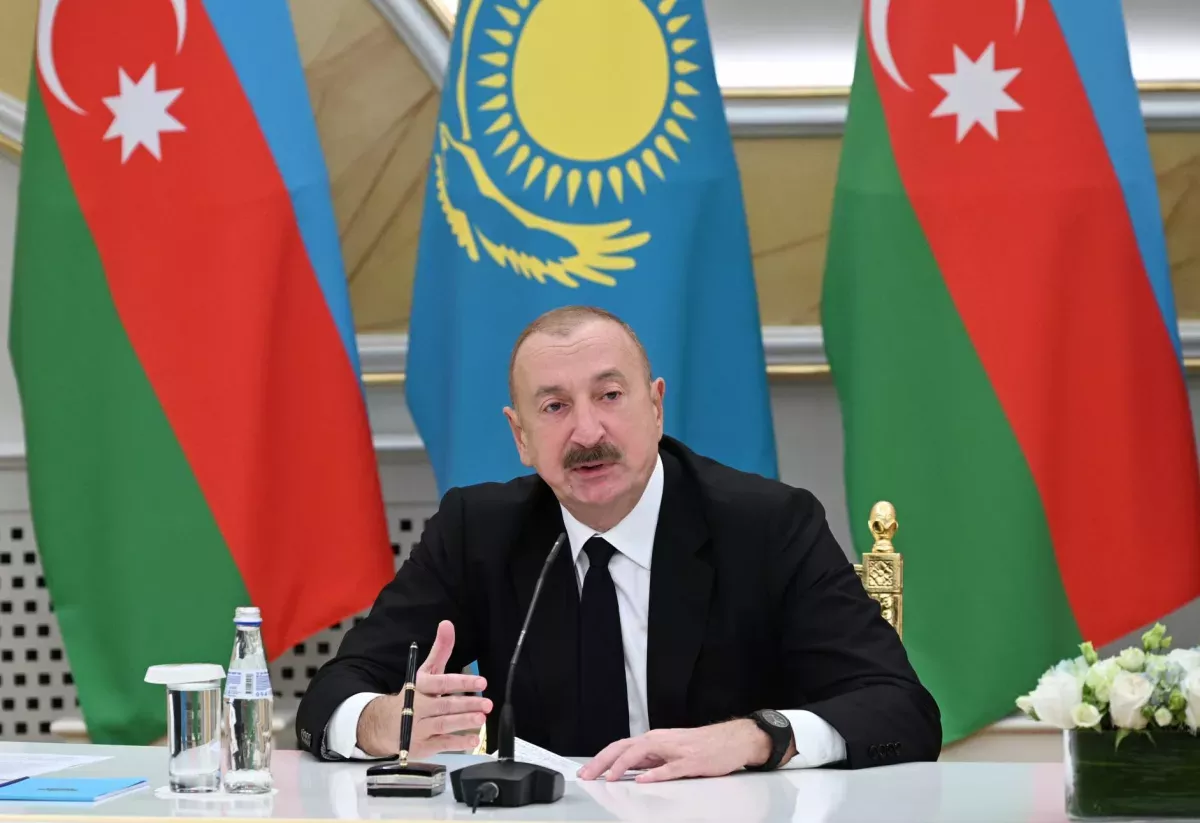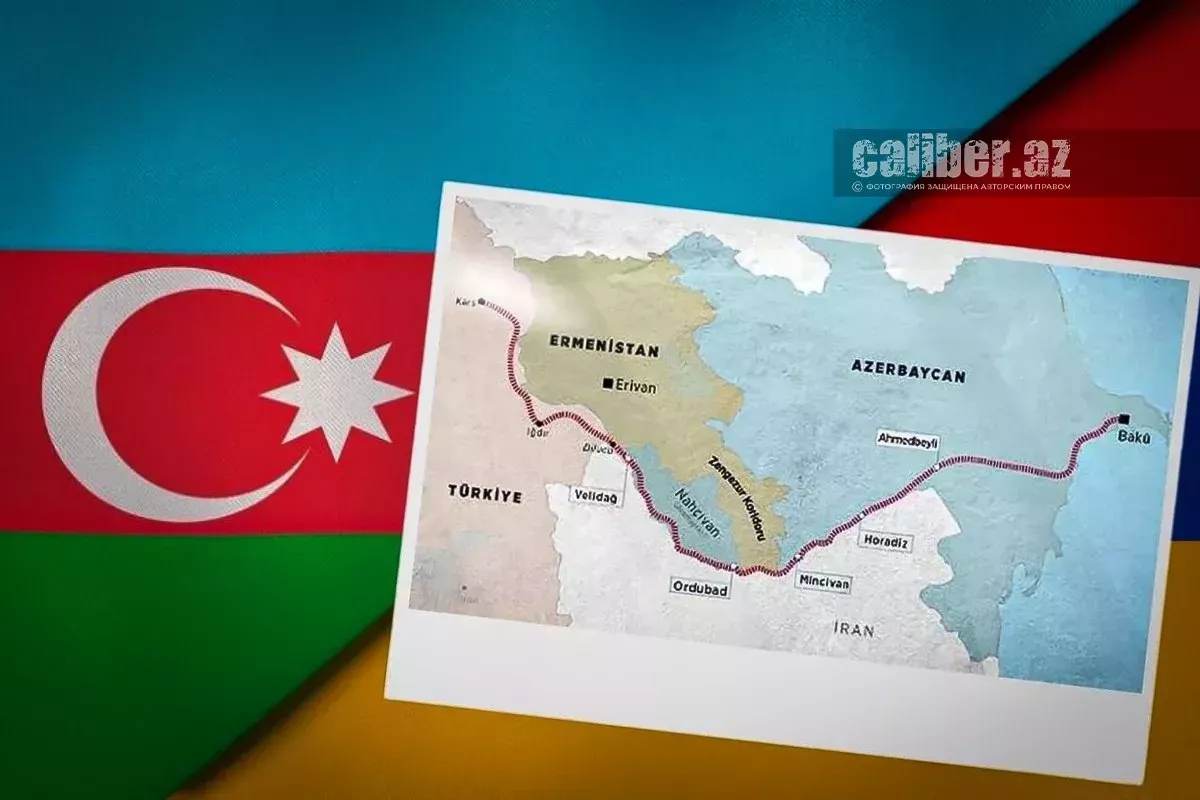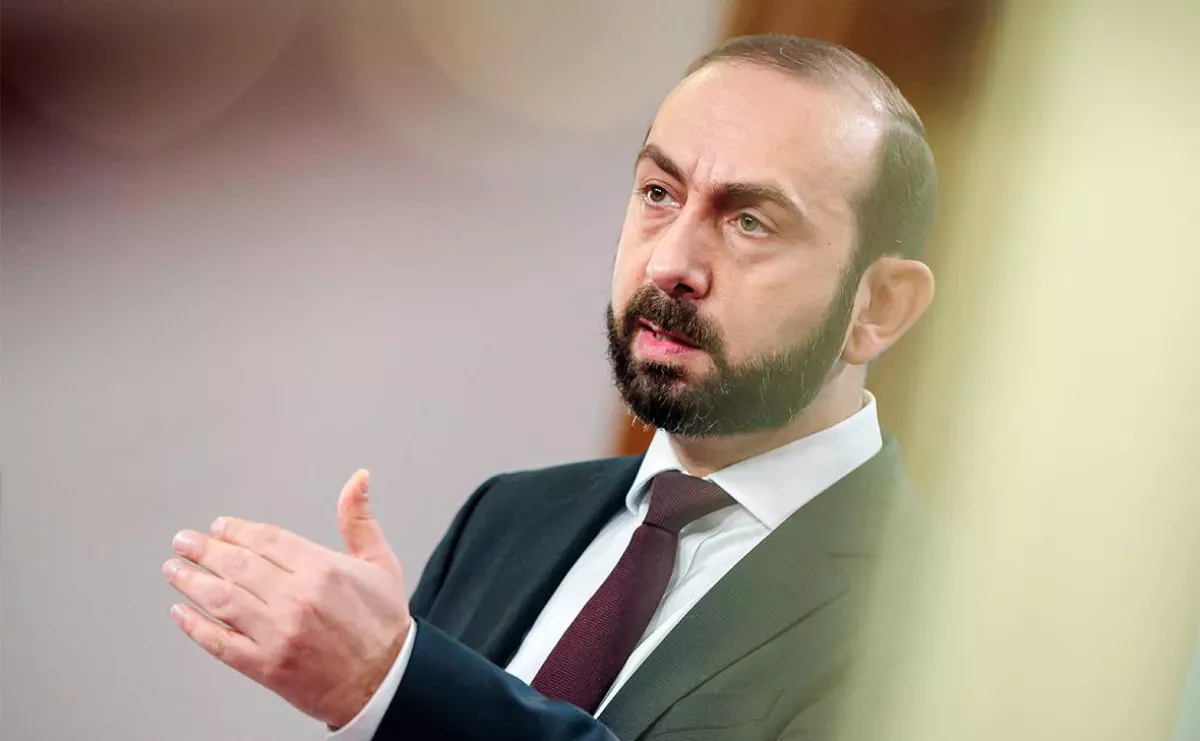Azerbaijan is "stitching together" the fractured South Caucasus Threads of peace
This week, President Ilham Aliyev announced that Azerbaijan has lifted all restrictions on the transit of goods to Armenia that had been in place since the occupation. The first such transit shipment was Kazakh grain to Armenia. In response, Armenian Economy Minister Gevorg Papoyan declared: “Peace has been established.” The geopolitical significance of Azerbaijan’s decision to open the route for goods to Armenia is hard to overstate. It lays the political and economic foundation for peace and the restoration of the historical unity of the South Caucasus. A new geopolitical configuration of the region is also emerging as a connecting link in Eurasia. This will provide new opportunities for Armenia, provided it participates in implementing the plans promoted by Azerbaijan.
The Zangezur Corridor issue resolved
On October 21, President Ilham Aliyev announced the lifting of restrictions on the transit of goods to Armenia through Azerbaijan, following talks with his Kazakh counterpart, Kassym-Jomart Tokayev. The first shipment sent to Armenia via Azerbaijan was symbolic in many ways. It consisted of food—wheat—and was transported from Kazakhstan through Azerbaijani and Georgian railway lines.

Three countries, cooperating productively with each other and not looking to superpowers or global blocs, are demonstrating to Armenia the importance of good-neighborly relations, which can withstand any global storms. Conversely, in their absence, amid hostility with neighbors, even the protection of the world’s most powerful countries will not help.
Speaking about opening transit for Armenia, President Aliyev added that the Zangezur Corridor will be operational by the end of 2028, easing communication between the two parts of Azerbaijan’s territory and making a significant contribution to restoring the historical unity of the South Caucasus.
By mid-2026, Azerbaijan is set to complete construction of the highway and railway on its section. The Armenian side, however, shows little urgency. Reports indicate drilling and blasting activities near the border, likely related to road construction, while reconstruction of the dismantled railway in northern Armenia has yet to begin. The project will require around half a billion dollars—funds that still need to be secured. Yet they are expected to materialise, as Azerbaijan’s leadership has devised a diplomatic strategy that effectively ensures the Zangezur Corridor’s implementation, even with the backing of Western partners.
Paradoxically, yet undeniably, Aliyev—always ready to challenge both East and West—often manages to negotiate with them more successfully than Pashinyan, for whom Brussels, Paris, and Washington carry an almost totemic importance.
Overall, the Armenian establishment cannot ignore the fact that in August, under the mediation of U.S. President Donald Trump, a joint Azerbaijani-Armenian declaration on peaceful relations was signed in Washington. The agreement outlines the creation of the transport corridor dubbed the “Trump Route for International Peace and Prosperity.” At that time, it was also stipulated that the Armenian side would transfer the relevant Armenian lands to the control of an American contractor.
It has become clear even to EU officials that the Zangezur Corridor project already rests on a solid diplomatic foundation—one that some revanchist circles in Armenia had hoped to undermine through the Union. Last week, EU Ambassador to Armenia Vasilis Maragos announced the EU’s readiness to invest funds “within the framework of the Trump Route project.” As we can see, Baku has succeeded in giving the Zangezur Corridor initiative a series of powerful international impulses, particularly since Yerevan has flatly refused to resolve the matter as a good neighbour, without involving outside actors.
Who is building real roads, and who is only drawing plans?
Notably, the Zangezur Corridor is not just about Azerbaijan and the South Caucasus. Sooner or later, European countries on one side and states of Central, Eastern, and even Southern Asia on the other will turn to using the overland route through the South Caucasus to connect with each other. There is no alternative: one should not be misled by the seeming brevity of the confrontation between the West, Russia, and Iran. It may subside in a few years, but in the meantime, the very infrastructure for communication—developed over decades—has already been seriously damaged. And much more of it is likely to be destroyed: on Wednesday, Polish Foreign Minister Sikorski pointed to the potential necessity of dismantling the Druzhba oil pipeline. In the meantime, the corridor from the Arctic to the Black Sea is being segmented by “iron fences,” minefields, and anti-tank obstacles.
In this context, we can expect the redirection of trade, resource, and human flows between Europe and Asia along new routes. Many such plans—obvious ones, like shipping for China via the Northern Sea Route—have been discussed but not implemented; as a result, the world is becoming increasingly fragmented, a trend further exacerbated by chronic instability around the Suez Canal in the Red Sea and the overall rising cost of freight.
Against this backdrop, a new opportunity emerges for overland routes, with the South Caucasus corridor taking a leading position. In fact, the main alternative routes for redirecting cargo and passenger flows between the East and West of the continent have already, in recent years, largely run through the South Caucasus and Türkiye.

The “Trump Route” through southern Armenia will enable another step in reshaping the geopolitical configuration of the region—and of an entire continent—since it involves building costly infrastructure that, like natural phenomena or major landmarks, can permanently alter the economic and military geography of vast areas. Meanwhile, Armenia is negotiating the opening of communications with Türkiye, primarily the restoration of the Gyumri–Kars railway, which will further facilitate the development of continental-scale transport routes through the South Caucasus.
The Azerbaijani leadership is explicitly pointing to these prospects. In Astana, President Ilham Aliyev noted that the Zangezur Corridor is being planned to meet “the most modern standards,” meaning that the volume of cargo from Asia to Europe and back through the territories of our countries has strong potential for growth. In other words, the Zangezur Corridor, as a locomotive for restoring a unified South Caucasus, paves the way for a wide range of projects.
In September, at a meeting of the Eurasian Intergovernmental Council in Minsk, Azerbaijani Prime Minister Ali Asadov highlighted that the Zangezur Corridor could become part of the international “North–South” transport corridor (a route from Russia to the Persian Gulf through Azerbaijan) as well as the Trans-Caspian international transport route from Central Asia to the Caucasus.
A key point is that the Azerbaijani government plays the leading role in these projects. Moreover, Azerbaijan could, in principle, implement most of these projects without Armenia—though it would be somewhat more complicated. The creation of the Zangezur Corridor advances Azerbaijan’s path toward realizing these plans, while simultaneously guaranteeing Armenia a better future built on good-neighborly relations.
A geopolitical charade
Meanwhile, the Armenian leadership appears more focused on distant allies. Last week, Armenian Foreign Minister Ararat Mirzoyan stated that his country could submit an application to join the European Union in the coming months. According to him, “the citizens of Armenia are demanding that we move forward. We are hearing some criticism from them regarding possible delays and lengthy procedures.”

Given the absence not only of a referendum but even of elections following the Armenian parliament’s adoption in March of a bill on EU accession, such statements border on demagoguery. At the same time, Pashinyan had promised to hold the corresponding referendum.
In many countries outside Western Europe, European integration has become a “cash cow” for politicians who rise to power and maintain it by betting on the EU as their main support, rather than relying on backing from their own citizens. The Yerevan establishment is playing the same game. Mirzoyan announced that a new partnership program between Yerevan and the EU will be signed within the next three months and promised a visa-free regime with the EU within a year or two.
Previously, Prime Minister Pashinyan had spoken more cautiously, warning that even fulfilling the EU’s requirements would not guarantee membership, and noting that he sees Armenia as part of the EU only in about twenty years.
It turns out that Mirzoyan is now talking about acceleration. He made these remarks in an interview with Deutsche Welle, which already signals a gesture from the EU. The context is also noteworthy: Brussels is currently looking for ways to incorporate Ukraine and some other countries into the bloc while bypassing existing procedures.
The issue is that Hungary and other countries are currently opposing Ukraine’s membership. To navigate this situation and admit new members, Brussels has devised a new scheme—new members will join without veto rights, which they will acquire only after a corresponding decision by the existing members in the future. The absence of veto rights ensures their dependent status, while the promise to grant them later resembles the promises Western countries made to their colonies to grant independence once they had “mastered the basics of civilization.”
Why such a controversial scheme?
In the Brussels ruling circles, an idea has emerged to play a major geopolitical game by rapidly admitting Ukraine and Moldova (consolidating the EU’s foreign policy gains in its confrontation with Russia), as well as Montenegro (doing the same in relation to Serbia). This is sure to generate discontent among several other states, such as those in the Balkans and Georgia. They attempted to join the EU “the proper way,” meeting all required standards—the experience of Türkiye, which has far more order than most EU countries yet was not admitted, taught no one.

The EU leadership needs to push through the scheme for admitting new members urgently, as discontent with the current course is growing among influential political and economic circles in the bloc, against the backdrop of corruption scandals involving European Commission President Ursula von der Leyen and her secret dealings with Trump.
This is not about another round of activist protests, but about major business interests—in particular, without agreements with the U.S., German industry is heading for disaster. Ursula’s “team of strong women” in Brussels is struggling not only on the American front. In July, even the patient Chinese cut the duration of their summit with the EU leadership in half, while for the failed Trump–Putin meeting in Budapest, the EU had planned to send not Ursula’s appointed head of EU diplomacy, but the person actually capable of handling such a serious task—the President of Finland, Stubb.
In short, under the weight of corruption allegations and foreign policy failures, Ursula began talking about admitting Ukraine, Moldova, and Montenegro to the EU even before 2030. Considering that the last EU enlargement was with Croatia in 2013, followed by the loss of the UK in 2017—a fact that hints at the bloc’s prospects—an urgent expansion on strict terms would serve as a fitting “farewell flourish” for Ursula and her team.
It is against this backdrop that Armenian leaders began speaking of accelerating their country’s accession, even though, in the hierarchy of the EU’s foreign policy priorities, Armenia ranks even below Ukraine. Consequently, it would be admitted through a “simplified procedure.”
The only way to save Armenia from such dubious fortune is an alternative path—prioritising the restoration of relations with neighbours and participation in regional projects. This would not prevent future EU membership if Armenia so desires, but on far more advantageous terms. All routes to meaningful European integration for Armenia run through Baku.








